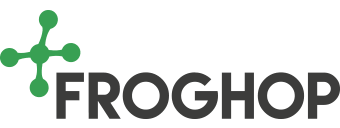If your product is ever going to be sold through retailers, you need to know whether it’s a VAT exempt food or not. If not, you risk taking a 20% hit on your margin.
Understanding your responsibilities can make the difference between being profitable and losing money on every unit sold. Let’s take a closer look at VAT on food products and what you can do to avoid the perils and pitfalls.
What is VAT?
Value Added Tax (VAT) is an indirect UK tax. Businesses collect VAT on behalf of the government by adding a VAT charge onto their goods or services. The customer pays this and subsequently the business passes it on to HMRC.
However, not all products are created equal. In fact, within the food space there’s a mind-bending level of nuance to how items are rated for VAT. One point to make clear is that VAT is a UK tax. Other countries have their own versions – sales taxes and so forth – but each differs so it pays to do your research. Fortunately, there are many solid VAT experts in the UK and the government also lends a hand, providing useful information on its website.
What are your responsibilities?
You should be registered for VAT if:
- You expect VAT taxable turnover to be above £85k in the next 12 months
- Your business had a VAT taxable turnover of more than £85k in the past 12 months
- You think you will exceed the VAT threshold in the next 30 days
Bear in mind there are other situations beyond these categories where you’ll need to register so, again, it pays to get expert guidance. If your annual turnover is under the thresholds, you can choose to register voluntarily. This might allow you to recover VAT you’ve paid when purchasing equipment, ingredients and services like marketing and design, and therefore reduce your costs. Either way, once you’re VAT registered, you must charge VAT on your goods and services if they require them – it’s not optional.
Retailers, VAT and VAT exempt food products
The other thing to consider is that, if your product is VAT-able, a retailer will be required to pay VAT when they sell it. This means that your cost price to the retailer and/or RRP needs to take this into account. If you get your classification wrong there’s a risk your profits will suffer.
Not only that, but if you get the classification wrong you could end up owing HMRC money. This is crucially important – you have to be certain that your product (and all its variations) are correctly classified.
Classifications for VAT on food are simple – except when they’re not
Categories and classifications for VAT on food categories are many and varied. Consequently, there are some variations – and surprises – for VAT exempt food (and drink) products. Not only are different types of food and drink products classified differently, there can be variations when it comes to the size of the products or the way in which customers use them. New or novel foods can also be problematic.
Rather than providing a detailed categorisation here, the crucial takeaway is that you need to be 100% confident that you have accurately classified your products and then validated that with HMRC.
